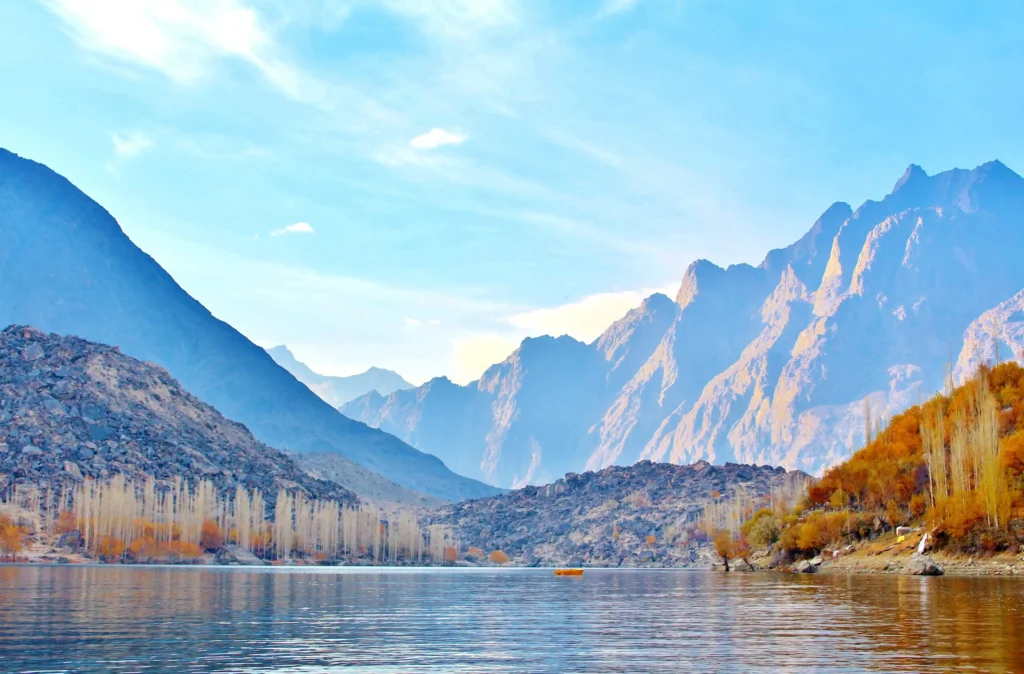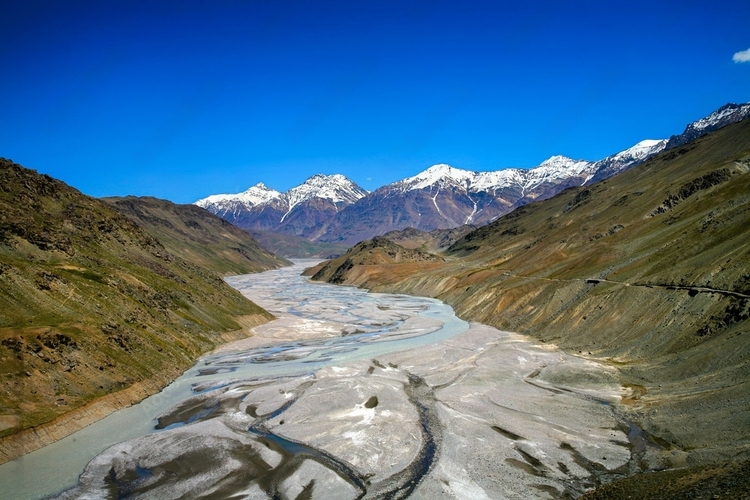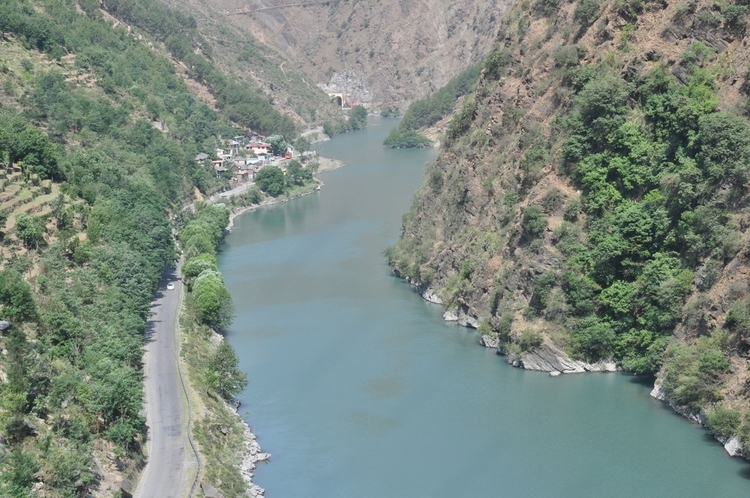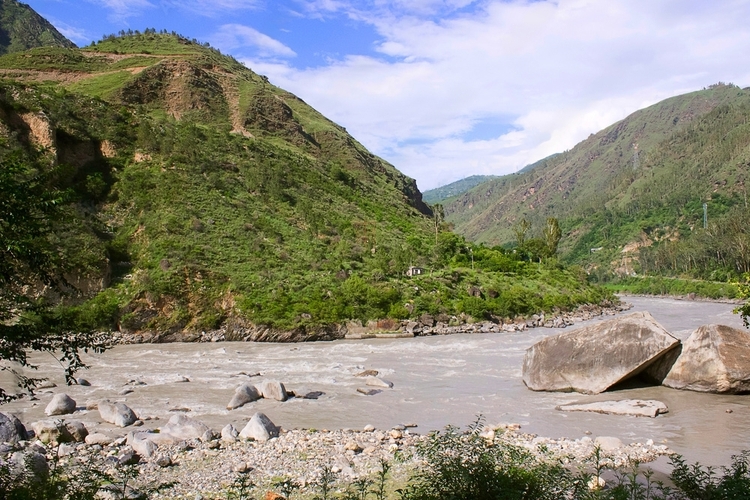Pakistan, a land of diverse landscapes, boasts five prominent rivers that not only shape its geography but also influence its culture, economics, and environment. This article delves into the unique characteristics of each river, exploring their historical significance and contemporary roles in sustaining life across the nation.
1. Indus River: The Mighty Lifeline

The Indus River, one of the major rivers of Pakistan and Asia’s most significant waterway, stretches over 3,180 kilometers, making it the longest in the country. Originating in Tibet and flowing through India (occupied Kashmir) before entering Pakistan, this historical river has played a crucial role in nurturing civilizations for millennia, contributing to the rich cultural tapestry of the region.
The Indus River has a total length of about 3,180 kilometers (1,976 miles). It was formed by the confluence of several tributaries in Tibet, including the Senge Zangbu and Gar rivers, and it serves as the backbone of Pakistan’s agricultural sector. The river supports a vast network of canals and rivers, playing a key role in the nation’s agricultural prosperity.
Historically significant, the Indus River was integral to the ancient Indus Valley Civilization, one of the world’s oldest civilizations that thrived along its banks. Today, the river remains a vital resource for Pakistan, contributing to the country’s economy by supporting agriculture, generating hydroelectric power, and serving as a crucial transportation route. Its importance extends beyond borders, marking its significance in the geography and history of the entire region.
2. Jhelum River: From Himalayan Heights to Northern Heartlands

The Jhelum River is another important river in Pakistan, serving as a tributary to the Indus River. It originates in the Indian-administered union territory of Jammu and Kashmir and flows through both India and Pakistan. The river plays a significant role in supporting agriculture and providing water resources to the region.
The Jhelum River has a total length of about 725 kilometers (450 miles), with approximately 274 kilometers (170 miles) of its course running through Pakistan. It originates from the confluence of the rivers Lidder and Sheshnag near the Indian town of Verinag. After flowing through the Kashmir Valley, the Jhelum enters Pakistan near the city of Muzaffarabad.
The Jhelum River is dammed at various points for irrigation, flood control, and hydroelectric power generation. The Mangla Dam, located near the city of Mirpur, is one of the major dams on the Jhelum River and forms the Mangla Reservoir. The dam helps regulate water flow, control floods, and generate electricity.
3. Chenab River: Nourishing Punjab’s Rich Plains

The Chenab River is one of the major rivers in Pakistan, and it is a significant tributary of the Indus River. It originates in the Indian-administered union territory of Jammu and Kashmir and flows through both India and Pakistan. The river plays a crucial role in the irrigation and agriculture of the region, contributing to the overall economy.
The Chenab River has a total length of about 960 kilometers (600 miles), with approximately 725 kilometers (450 miles) of its course passing through Pakistan. It is formed by the confluence of two rivers, the Chandra and the Bhaga, which originate in the Himalayas. The Chenab then flows through the Jammu region in India before entering Pakistan near the town of Marala.
Like the Indus River, the Chenab River has historical and cultural significance, and it has been a key feature in the development of civilizations in the region. It remains an essential component of the landscape and economy of the areas it traverses in Pakistan.
4. Ravi River: A Historical Flow Diminished but Not Forgotten

The Ravi River is one of the major rivers in Pakistan, forming part of the Indus River Basin. It originates in the Indian state of Himachal Pradesh and flows through both India and Pakistan. The river has historical significance and has been vital for irrigation and agriculture in the region. The Ravi River is a total length of about 720 kilometers (450 miles), with approximately 110 kilometers (68 miles) of its course running through Pakistan. It enters Pakistan near the city of Lahore and flows southwestward, eventually joining the Chenab River near the town of Ahmadpur Sial.
The river has played a significant role in the historical development of the region, particularly during the ancient Indus Valley Civilization. Today, it remains an important water source for agriculture, supporting the fertile plains through which it flows. The Ravi River, like other rivers in the Indus Basin, is utilized for irrigation purposes through various canals and barrages. The waters of the Ravi contribute to the overall irrigation system in the region, helping sustain agricultural activities.
Several dams and barrages have been constructed along the Ravi River to manage its flow, regulate water for irrigation, and generate hydroelectric power. One notable dam is the Ranjit Sagar Dam (also known as the Thein Dam), located in India, upstream from the international border.
5. Sutlej River: Bridging Cultures and Cultivating Soils

The Sutlej River came from India and entered Pakistan on its 1,550-kilometer (960-mile) journey. It originates from the Tibetan plateau in China and enters the Indian state of Himachal Pradesh, eventually crossing into Pakistan. In Pakistan, it flows through the province of Punjab and merges with the Chenab River near the town of Uch Sharif, forming the Panjnad River, which then joins the Indus River. The river is a tributary of the Indus River and has significant importance for the region’s water resources and agriculture.
The river has historical significance and has been harnessed for its water resources through various dams and barrages. The Bhakra Dam, located in the Indian state of Himachal Pradesh, is one of the major dams on the Sutlej River and serves multiple purposes, including irrigation, flood control, and hydroelectric power generation. Other dams and barrages along the Sutlej contribute to water management and power generation in both India and Pakistan.
The Rivers of Pakistan – Beyond Waterways to Cultural Highways
Pakistan’s five most famous rivers embody more than just flowing water; they represent the lifeblood of the nation. From the agricultural landscapes nurtured by the Indus, Jhelum, Chenab, Ravi, and Sutlej to the historical narratives woven into their currents, these rivers form an integral part of Pakistan’s identity. As we traverse their banks, we discover not only the natural beauty but also the cultural and economic vitality that these rivers bring to the diverse terrains of Pakistan.
FAQs: Unlocking the Mysteries of Pakistan’s Rivers
How many rivers in Pakistan?
Pakistan is traversed by a total of 24 rivers. Among these, 8 rivers run through the province of Khyber Pakhtunkhwa, 7 through Balochistan, 5 through Punjab, and 4 through Sindh. The primary river system in Pakistan originates from the Himalayas and the Karakoram Range.
Which is Pakistan deepest river?
The depth of the Indus River can reach significant levels in certain stretches, making it not only the largest but also the deepest river in Pakistan.
Which two rivers meet in Pakistan?
In Pakistan, the rivers Neelum and Jhelum meet at Muzaffarabad, the capital city of A&JK. The Chenab River and the Jhelum River meet near the city of Trimmu, forming the Panjnad River.
